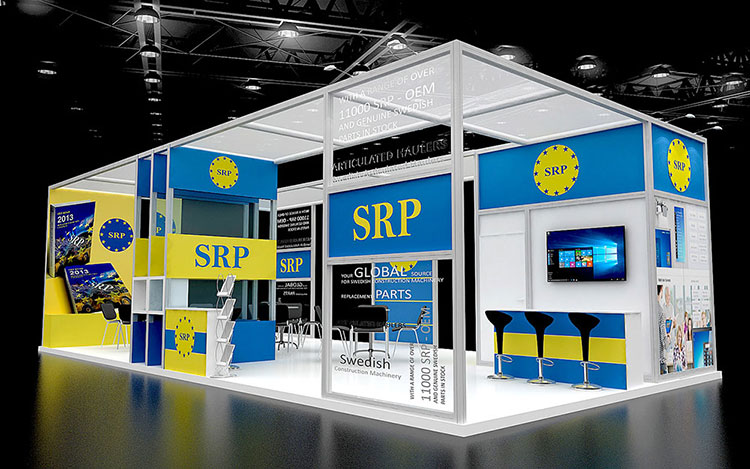What Are the Success Factors of An Exhibition in Germany?
If you’ve organise exhibitions in Germany, you may understand the pressure that comes with the event. Whether you are trying to sell a product or balance the expectations of the attendees and exhibitors, the pressure to execute a successful event is always there. It is said there are many factors that determine the success of an exhibition, like the exhibition stand design, a custom exhibition stand builder, event strategy, etc.
Here, we have outlined some of the most important factors that will lead to a successful exhibition in Germany:
Contents |
[edit] Industry specific
As an exhibitor, you must know the famous exhibitions organised in your industry. Although various industries organise some of the best exhibitions, you need to understand which exhibition will suit your brand or will attract a maximum target audience. Furthermore, while selecting an exhibition in Germany understand the number of events held annually and the dates of the exhibition. And try to select an exhibition that is different from your competitor, as it may reduce your audience numbers.
The type of industry is one of the success factors of an exhibition in Germany because the right exhibition will promise you success.
[edit] Venue
Your choice of custom exhibition stand design space also increases or decreases your success rate in an exhibition. The stand design space lets you understand how many visitors you will engage. If your exhibition booth design venue is quite far away, it may hamper your achievement rate. While deciding upon the location of the exhibition stand design you should keep an eye on the accessibility factor and the available floor space. Try to select an exhibition stand design venue that is accessible and easy to find.
[edit] Marketing
Marketing is another factor that weighs the success of an exhibition. The better you promote your exhibition presence, it will affect the number of attendees visiting your stand. Rather than simply posting about your trade show participation, you can take the creative way, like engaging in long marketing campaigns and target your advertisements for your audience. Begin an online competition with some exciting prizes that will end on the day of the exhibition.
The pre-show marketing tactics include who to target, the reason to visit your booth, the exhibition incentive you will offer and different ways to reach them. Post-show marketing strategies will include evaluation of marketing, event promotion, and feedback.
[edit] Staff
Exhibition stand staff is the face of the company. They are responsible to manage the booth space. Select booth staff that is hardworking, has good communication skills and knows about your products, customers, and industry. Your stand staff should be prepared to clear your audience’s doubts. They should be able to demonstrate your company’s products in a way that would be able to solve your potential problems. Moreover, the stand staff should be well behaved, otherwise, a bad image of your brand will be portrayed.
[edit] Leaf follow-up
Follow-up on leads is one of the most important success factors of an exhibition in Germany. You should evaluate and prioritise your leads and follow up quickly. Make sure to send a thank you mail or acknowledgements message to your leads within 24 hours when the exhibition gets over. This way the prospects will be guided towards the buying procedure.
To ease your tasks, create a worksheet and add your potential, then document whether you met your exhibiting goal or not.
[edit] Conclusion
These were some of the success factors of an exhibition in Germany. You should work on these parameters to achieve your exhibiting goal. If you plan out these factors systematically, you may have a positive exhibition.
[edit] Related articles on Designing Buildings
Featured articles and news
BSRIA Sentinel Clerk of Works Training Case Study
Strengthening expertise to enhance service delivery with integrated cutting-edge industry knowledge.
Impact report from the Supply Chain Sustainability School
Free sustainability skills, training and support delivered to thousands of UK companies to help cut carbon.
The Building Safety Forum at the Installershow 2025
With speakers confirmed for 24 June as part of Building Safety Week.
The UK’s largest air pollution campaign.
Future Homes Standard, now includes solar, but what else?
Will the new standard, due to in the Autumn, go far enough in terms of performance ?
BSRIA Briefing: Cleaner Air, Better tomorrow
A look back at issues relating to inside and outside air quality, discussed during the BSRIA briefing in 2023.
Restoring Abbotsford's hothouse
Bringing the writer Walter Scott's garden to life.
Reflections on the spending review with CIAT.
Retired firefighter cycles world to raise Grenfell funds
Leaving on 14 June 2025 Stephen will raise money for youth and schools through the Grenfell Foundation.
Key points for construction at a glance with industry reactions.
Functionality, visibility and sustainability
The simpler approach to specification.
Architects, architecture, buildings, and inspiration in film
The close ties between makers and the movies, with our long list of suggested viewing.
SELECT three-point plan for action issued to MSPs
Call for Scottish regulation, green skills and recognition of electrotechnical industry as part of a manifesto for Scottish Parliamentary elections.
UCEM becomes the University of the Built Environment
Major milestone in its 106-year history, follows recent merger with London School of Architecture (LSE).
Professional practical experience for Architects in training
The long process to transform the nature of education and professional practical experience in the Architecture profession following recent reports.
A people-first approach to retrofit
Moving away from the destructive paradigm of fabric-first.
New guide for clients launched at Houses of Parliament
'There has never been a more important time for clients to step up and ...ask the right questions'
The impact of recycled slate tiles
Innovation across the decades.
EPC changes for existing buildings
Changes and their context as the new RdSAP methodology comes into use from 15 June.


























